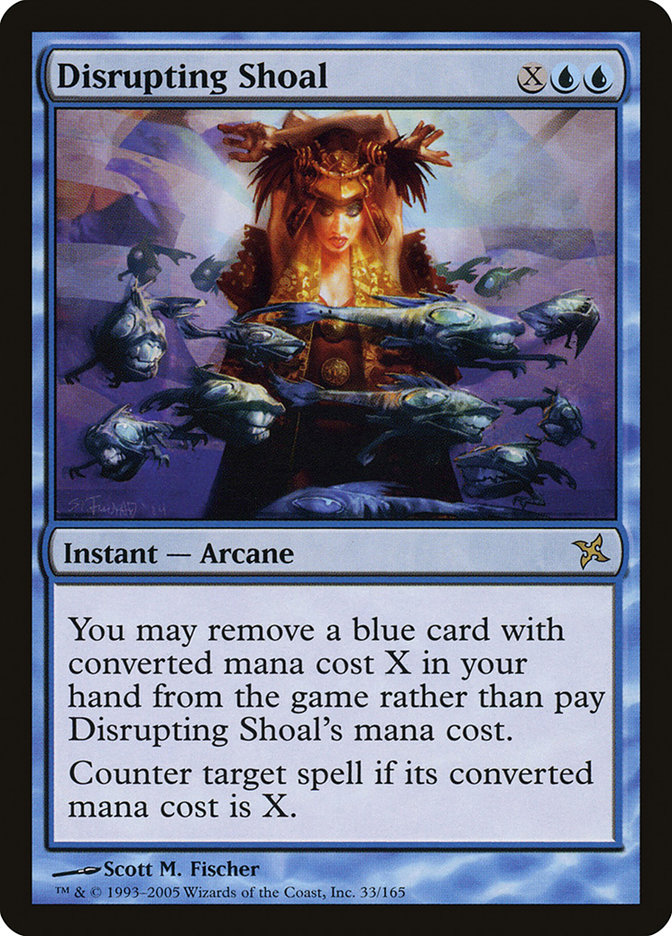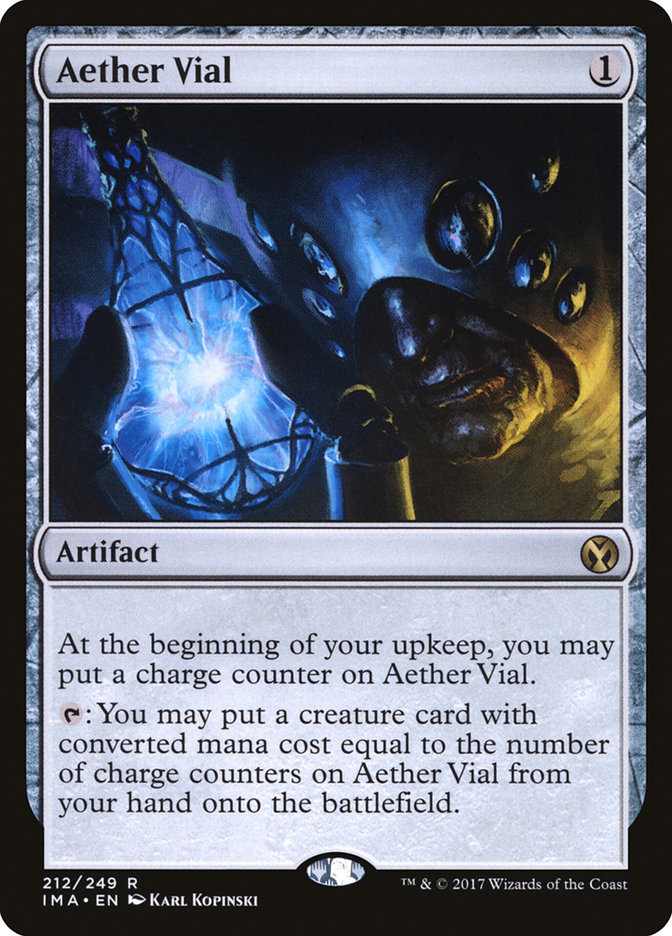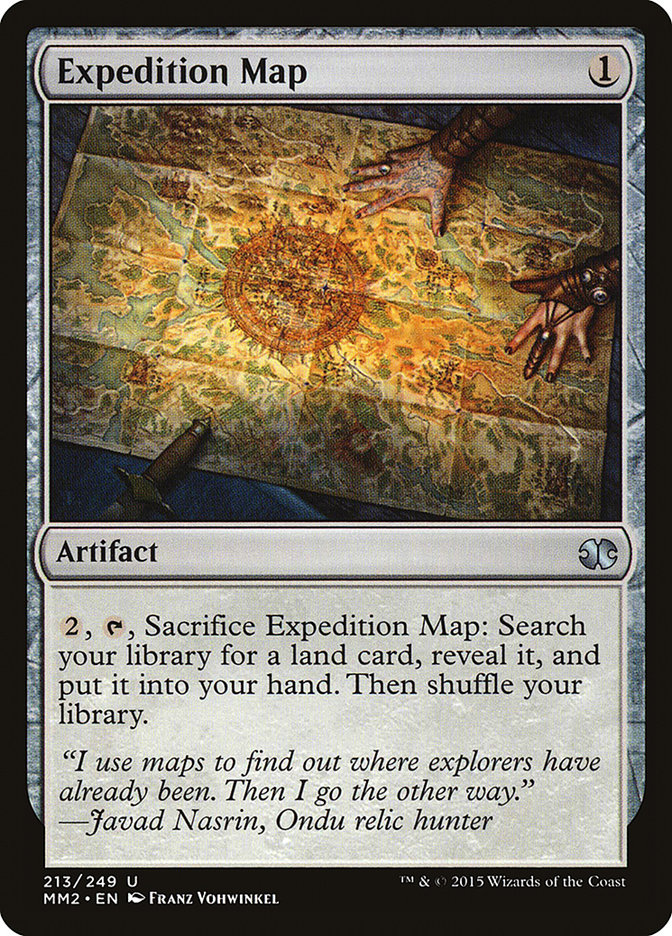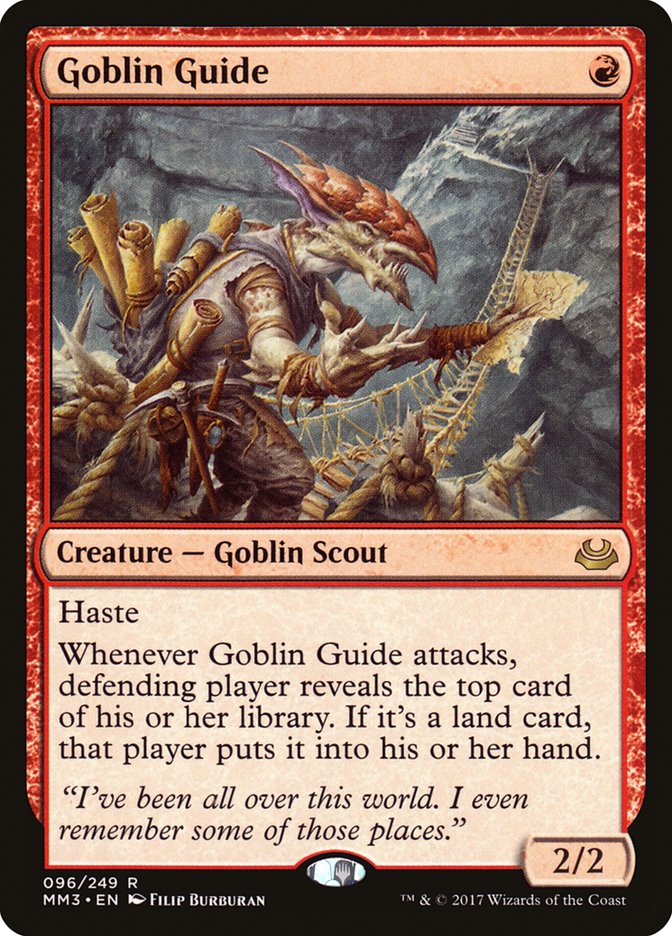When Wizards of the Coast announced that Jace, the Mind Sculptor was going to be unbanned in Modern, I was heartbroken. I thought that the card was much too good for the format and would dominate it, and I wasn’t alone in those sentiments. Many people were worried what Jace would do to the diverse format that they loved.
Jace, the Mind Sculptor has now been Modern-legal for an entire month, and to my surprise, Jace isn’t dominating the format at all. In fact, so far Bloodbraid Elf, the other card unbanned at the same time as Jace, has had a bigger impact on the format so far. So what’s happening? Why is the best planeswalker ever printed not dominating Modern like I and many others thought it would? Well, there are many factors combining to hold back the impact Jace has had so far, so let’s break them down.
A Chaotic Format
Modern was turned upside down overnight when Jace, the Mind Sculptor and Bloodbraid Elf were unbanned, as everyone has been trying new builds with the two cards since. It’s almost impossible to have a deck filled with answers if you don’t know the questions your opponents will ask, and therefore the control decks predictably struggled out of the gates. This has been common in Modern for a long time, with control mages asking for the power of Jace, the Mind Sculptor to help their favorite strategy. However, that wasn’t the only card unbanned that day.
The Bloodbraid Elf Effect
When initially analyzing the impact Jace, the Mind Sculptor would have on Modern, I dismissed Bloodbraid Elf, thinking it was just a tool to help Jund but not much else, and that was completely wrong.
By increasing both the prevalence and the speed of Jund, which was already an aggressive midrange strategy thanks to Lightning Bolt and Raging Ravine, the entire format has adapted to be leaner and faster. Decks are less focused on interaction and more on winning the game as soon as possible. This was first evident with G/W Hexproof being the breakout deck at the Magic Online Championship.
Creatures (12)
Lands (20)
Spells (28)

The following weekend, at the first StarCityGames.Com Open Modern Open with the two cards legal, the Top 4 had two copies of U/R Gifts Storm and one copy of Infect. The weekend after that, at Grand Prix Phoenix, the Top 4 contained Ironworks Combo and a version of Bant Knightfall filled with Turn 3 combo potential.
Jund has the same late-game power it always had, but now, with the faster clock that Bloodbraid Elf has provided the deck, the metagame has focused on going under it to find success. As such, the Jace, the Mind Sculptor decks, which are built on answers and slowing the game down, need to have the correct answers for each linear deck immediately in order to prolong the games. This is an incredibly tough task when the metagame changes drastically overnight, like it did with the unbannings.
The Hollow One Effect
Ever since Pro Tour Rivals of Ixalan, B/R Hollow One has only become more and more popular. It’s not merely a very fun deck to play because of the random elements it provides; it’s also simply a really good deck. It provides different types of difficult threats to deal with, ones that require specific answers, and it can have the most explosive starts of the format.
Creatures (24)
- 4 Street Wraith
- 4 Bloodghast
- 3 Gurmag Angler
- 4 Flamewake Phoenix
- 1 Tasigur, the Golden Fang
- 4 Flameblade Adept
- 4 Hollow One
Lands (18)
Spells (18)
Sideboard

Take a look at those creatures. They are a nightmare for a control deck! Flameblade Adept only costs one mana and therefore trades evenly with a removal spell while being an immediate must-answer threat. Bloodghast and Flamewake Phoenix laugh in the face of spot removal that doesn’t exile. Hollow One and Gurmag Angler are too big to Lightning Bolt and cost too much to Fatal Push. It’s basically Path to Exile or bust for the control decks, which creates another problem when looking at the format as a whole.
The Constraint on Removal
There are three removal spells in Modern that stand above the rest and are the pillars of the format. None of them share a color with Jace, the Mind Sculptor, so playing a two- or three-color deck with Jace is necessary if you want an interaction-heavy control deck.
Let’s start with Path to Exile, which is the best option for simply removing creatures from the battlefield, as noted earlier. This would lead us to wanting to play a U/W deck with Jace, the Mind Sculptor. The problem is, besides dealing with creatures really well, white doesn’t offer much else for the control deck, and being one-dimensional isn’t where you want to be in Modern. Even just looking at the linear decks I mentioned above, Path to Exile isn’t amazing against Hexproof, Ironworks Combo, or U/R Gifts Storm.
If we move on to Fatal Push, which is the most limited option of the three removal spells, we gain other valuable options. Having access to black gives us access to discard spells like Thoughtseize and Inquisition of Kozilek to pair with our quality removal spell, which is promising. Between removal, discard, and card advantage, U/B seems to give us everything we need…
…except a good way to win the game quickly when we need to race. Holding back Modern decks like Burn and Tron forever is incredibly difficult, and therefore disrupting them just enough to pull out a win is the goal. That’s why U/B control decks have traditionally added a third color to the mix.
More specifically, they add red to have access to Lightning Bolt, the most versatile of the three removal spells. Lightning Bolt has been the biggest winner of the unbannings, as it’s always a live card when cascaded into with Bloodbraid Elf and can deal damage to planeswalkers such as Jace, the Mind Sculptor, unlike the other two. When paired with Snapcaster Mage, it’s the most efficient tool for blue control decks to end the game quickly.
Since U/R looks to be a strong color combination, what’s the problem? With Lightning Bolt only dealing three damage, any creature with toughness four or higher, is a major hassle to deal with. Also, there aren’t any hard sweepers such as Supreme Verdict or Damnation if you stay in U/R, and again, your best options only deal three damage. Cards like Slippery Bogle and Gurmag Angler are incredibly difficult to deal with.
With there being plenty of holes with each one of these two color pairings, it looks like adding in a third color may be the way to go. Out of these options, Grixis and Jeskai are the two decks that have traditionally seen the most success in Modern, with Jeskai being one of the best decks in the format before the printing of Jace, the Mind Sculptor. However, we only saw two copies of Jeskai Control in the Top 32 of #SCGDFW and zero copies at #GPPHX, with no copies of Grixis or Esper Control in sight! What’s holding down the three-color control decks?
Last week I wrote about the strength of being able to cast Turn 2 Blood Moons in the format when backed by Bloodbraid Elf. Well, that’s not the only home for Blood Moon, and we ended up seeing a whopping 23 copies of the card in the Top 32 of #GPPHX last weekend, making it the sixth most played nonland card overall. Blood Moon is an absolute nightmare for the three-color control decks to deal with, and when you combine it with the faster format that has difficult-to-handle permanents and the inconsistencies that come from a three-color manabase, it’s easy to picture why the three-color control decks are struggling.
Finding an Answer
With all the problems the three-color decks are facing, it looks like it’s best to turn to the two-color decks for the time being. Sure, each one has its own flaws, but, honestly, that’s just how Modern is. The format has too many decks attacking from too many angles to have a good matchup everywhere.
With that said, I’ve been working hard over the last few days with Jace, the Mind Sculptor control decks, and there are two in particular that I’m excited about right now and am considering piloting at #SCGCIN this weekend.
Creatures (6)
Planeswalkers (4)
Lands (23)
Spells (27)

I played U/W Control at SCG Dallas and was really high on my deck, but I ended up getting locked out by Blood Moon still a few too many times. My build before was much more focused on creature removal, with multiple copies of Oust and Blessed Alliance maindeck and two copies of Entreat the Angels as a finisher instead of Monastery Mentor. However, I’ve changed that because I’ve been incredibly impressed with a card I had a very low opinion on before really playing with it.
Like I started to mention, before really giving it a try, I didn’t think Disrupting Shoal was a very good card, but the more I play with it, the more I’m sold. I would say that over half of the time I cast Disrupting Shoal, I don’t use the alternate cost and am simply paying four mana to counter a Tarmogoyf or somesuch.
That’s still fine for the control deck, because if you’re at the point of the game where you can do that, then you’re looking good. When the “Force of Will” mode is turned on, it’s unreal good for Modern, as I’ve countered anything from an Aether Vial to an Expedition Map to a Goblin Guide on the draw Turn 1, and it feels really good.
Being able to tap out to cast a Jace, the Mind Sculptor while being able to counter their Cryptic Command or their own Jace is the difference in games, and Disrupting Shoal has been impressive. Both Jace and Monastery Mentor will take over the game when you can untap with them, and Disrupting Shoal helps that happen. Finally, like I mentioned before, when you are in the late-game and have an abundance of mana, Disrupting Shoal is a perfectly serviceable hard counter, even with Snapcaster Mage to flash it back.
In order to facilitate Disrupting Shoal, I’m playing as many blue cards in the maindeck as I can, with only the copies of Path to Exile and Monastery Mentor as exceptions. It’s also the reason why I’m playing one maindeck Spell Pierce, as I’d rather that slot be another Logic Knot overall, but having an abundance of one-mana cards for Disrupting Shoal is crucial. I’ve found Spell Pierce to be more desirable than Spell Snare for now, yet could also see changing those two.
Creatures (7)
Planeswalkers (8)
Lands (24)
Spells (21)
- 4 Serum Visions
- 1 Engineered Explosives
- 3 Thoughtseize
- 4 Inquisition of Kozilek
- 2 Go for the Throat
- 1 Hero's Downfall
- 4 Fatal Push
- 2 Search for Azcanta
Sideboard

The other deck I’ve been working on is U/B Control, and I’m even more excited about this one. I’m not playing Disrupting Shoal here, as now I have access to black’s discard spells to proactively protect my threats. The key to this deck, in my opinion, is probably a card that doesn’t seem to fit into a control deck at first glance:
We all know how good the curve of Thoughtseize, Dark Confidant, and Liliana of the Veil is for Jund, and this deck is looking to do the same thing. Dark Confidant provides extra resources, while Liliana of the Veil denies the opponent resources.
The biggest problem with Dark Confidant in control decks, traditionally, is that the loss of life is too risky. However, this deck not only has an incredibly low curve, with 51/60 cards costing two or less, but it also can use Jace, the Mind Sculptor to set up the Dark Confidant triggers, enabling you to go deep into the game and be safe from dying to Dark Confidant. The combination of Jace, the Mind Sculptor and Dark Confidant working side by side, with plenty of discard to help protect them, allows this deck to out-grind the other midrange decks, even without having many sweepers.
Breaking Out
The good news for you Jace, the Mind Sculptor fans out there is that, as the metagame starts to settle down and become more predictable, the better it will become for Jace decks. We already see a tick up in the amount Jace is seeing play; after six pilots of the #SCGDFW Top 32 had the powerful planeswalker in their deck, nine people in the Top 32 of #GPPHX, or a little over 28%, had Jace in their deck the following weekend.
Jace has shown up in scattered decks, though, and there isn’t necessarily a perfect home found for the card yet. Still I expect to see the trend of Jace finding success continue to move upward, and I expect a specific Jace, the Mind Sculptor deck break out into Modern’s top tier soon.










